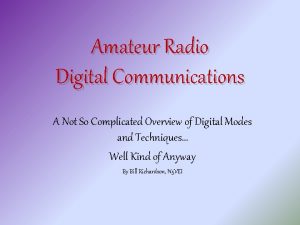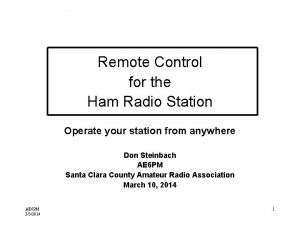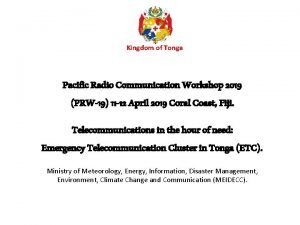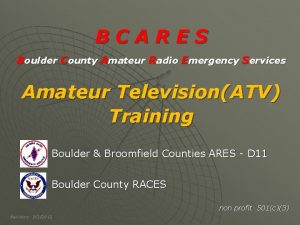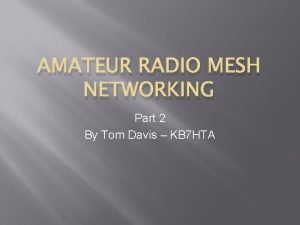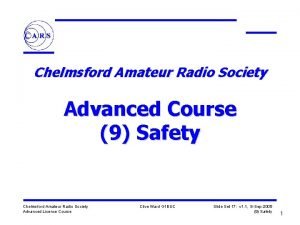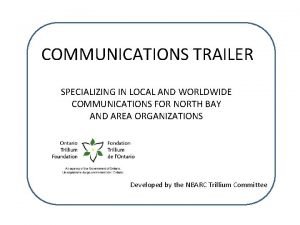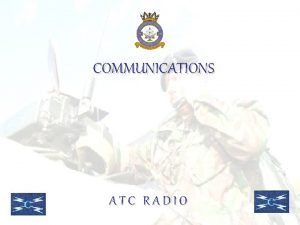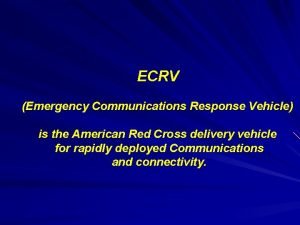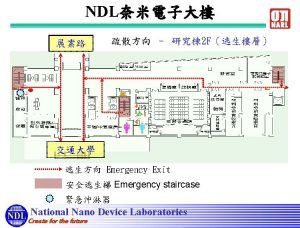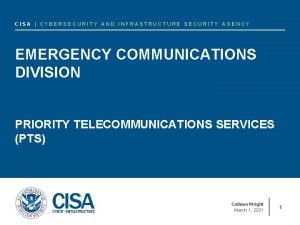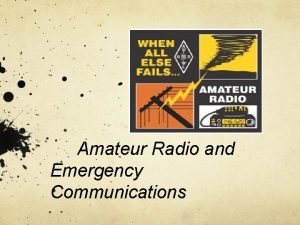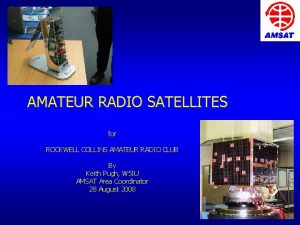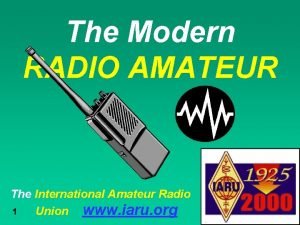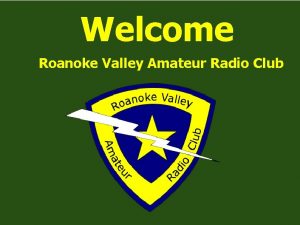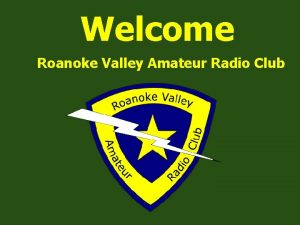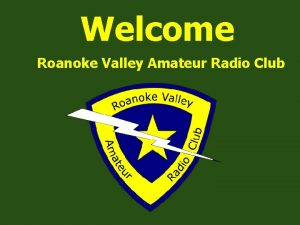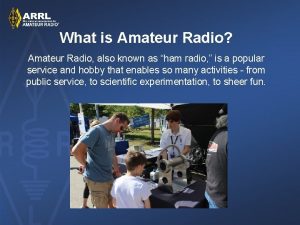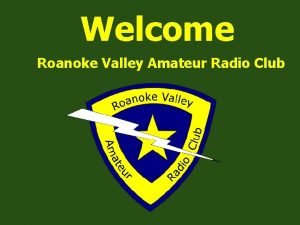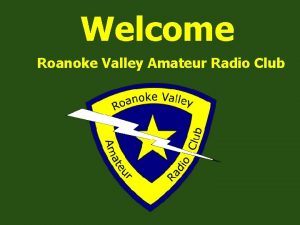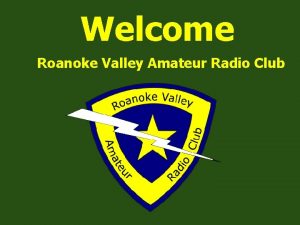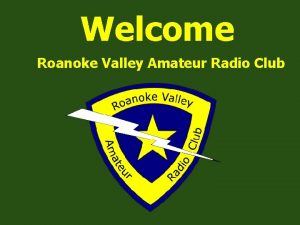Amateur Radio Emergency Communications Introduction to Emergency Communication














- Slides: 14

Amateur Radio Emergency Communications Introduction to Emergency Communication

Introduction to Emergency Communication o What is a Communication Emergency? “A communication emergency exists when a critical communication system failure puts the public at risk. ” o What Makes a Good Volunteer? “The common attributes that all effective volunteers share a desire to help others without personal gain of any kind, the ability to work as a member of a team, and to take direction from others. ” 2

What Your Are Not! § You are not a “First Responder. ” § You have no authority. § The only decisions you can make are whether to participate or not, and those affecting your own personal health and safety. § When the agency you are supporting runs short of personnel it is not your job to fill the void! § You are not in charge “you are there to temporarily fulfill the needs of the agency whose communications system is unable to do the job. They tell you what they need and you do your best to comply. ” 3

Day-to-Day Versus Emergency Communications § Emergency communications include both amateurs and professionals. § Emergency operations happen in real time. § Emergency communications are often dealing with several continuous nets simultaneously to pass critical messages within a limited time frame. § Emergency communicators may need to organize and coordinate field operations with little or no warning. § Emergency communicators may need to interact with several key organizations simultaneously. § Emergency stations must be portable and be set up and operational anywhere in a very short time. 4

Day-to-Day Versus Emergency Communications (Continued) § Emergency communicators need to contact specific stations quickly to pass important messages. § Emergency operations have no schedule – They could last for days! § Unlike commercial operations, amateur radio emergency communicators have the equipment and skills to create additional capacity in a very short time. 5

The Mission § The job you will be asked to do will vary with the agency you serve: v Red Cross Shelters v State wide emergency communications support v Hospital communications support v Forest fire communications support v Search and rescue v SKYWARN support for the National Weather Service 6

Communications is Job #1 § § VHF/UHF/HF Radios Phone and FAX CB, FMS and GMRS The agency’s radio communications equipment 7

Anatomy of a Communication Emergency § § § In the early phases of many disasters (except earthquakes, tornados, explosions, etc. ) there is usually no need for emergency communication services. A “Watch” or “Warning” period gives you time to monitor developments and prepare to deploy while monitoring the NWS broadcasts. A supported agency or Emergency Operations Center (EOC) may put out a call for volunteers to deploy to field locations. A Rapid Response Team (RRT) may be deployed with a one hour notice. Communications assignments are made and supported until relieved. After the operation, a review of the effectiveness of its response by the supported agency, either alone by the amateur radio communicator or with the agency. This should be accomplished ASAP after operations have ended while the events are clear in everyone’s mind. 8

When does a communication emergency exist? A. Whenever the public is at risk. B. When there is an earthquake in your area and the public is inconvenienced. C. When a critical communication system fails and the public is inconvenienced. D. When a critical communication system fails and the public is put at risk. (PG 5, COL 1, PP 1) 9

Which of the following is it most important for an emcomm group to do at the end of an emergency communication operation? A. Review the effectiveness of its response. (PG 8, COL 1, PP 1) B. Take photos of the activity. C. Call the local newspaper to schedule interviews. D. Review the activities of the first responders.

Which of the following is it NOT a responsibility of emergency communicators? A. Making demands on the agency being supported. (PG 6, COL 2, PP 3) B. Having radios, frequencies and basic radio skills. C. Being licensed and preauthorized for national and international communications. D. Possessing emergency communications skills. 11

Which of the following describes the function of a Rapid Response Team (RRT)? A. To Handle large-scale emergencies over an extended period. B. To deploy a quick response in a very short time. (PG 7, COL 2, PP Last) C. To establish and operate a storm watch prior to any emergency. D. To review of the effectiveness of an emergency communications group.

In an emergency situation – when a served agency asks you to forward an urgent message – which of the following methods would you NOT employ? A. CB radio B. Family radio C. Informal, conversational grapevine (PG 7 COL 2, PP 2) D. The served agency’s own radio system. 13

Amateur Radio… www. emergency-radio. org
 Amateur radio digital communications
Amateur radio digital communications Ham radio remote
Ham radio remote Ham radio tonga
Ham radio tonga Bcares
Bcares Ubnt link calc
Ubnt link calc Chelmsford amateur radio society
Chelmsford amateur radio society Chelmsford amateur radio society
Chelmsford amateur radio society Chelmsford amateur radio society
Chelmsford amateur radio society Bbhn
Bbhn Communications trailer
Communications trailer Atc communications and radio procedures
Atc communications and radio procedures Emergency communications response vehicle
Emergency communications response vehicle National emergency communications plan
National emergency communications plan Cisa ecd
Cisa ecd Conventional radio system
Conventional radio system
